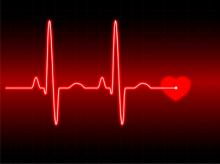
Mosterd, Senden, and, Engelfriet, authors of a recent editorial, (in Cardiovascular Prevention and Rehabilitation, April 2011) suggest strategies to reduce the occurrence of sudden cardiac death in athletes. They also comment on the limitations of routine prescreening of athletes.
The authors reference the seminal work of Drs. Corrado, Drezner, Basso, and Thiene that promotes preparticipation screening of young athletes and using an automated external defibrillator (AED) for prompt resuscitation of athletes suffering from cardiac arrest (1).
In today’s blog, Dr. Drezner responds to Mosterd, Senden, and, Engelfriet:
Their editorial is well reasoned and identifies many of the remaining issues about ECG screening. Also, I appreciate the authors supporting the value of AEDs!
Nonetheless here are a few comments:
These authors (and others) have focused on the question of ‘mandatory’ ECG screening or not… as if ECG screening is not performed there is no sports physical or cardiovascular screen at all. In most settings, the choice is not no screen or ECG screen, but limited screen (hx and phys) vs better/more sensitive screen (hx, phys, + ECG). All recommendations for preparticipation cardiovascular screening (AHA, ACC, ESC, IOC, FIFA) agree that the objective of cardiovascular screening is to identify those at risk of SCD. If we do not accomplish this well and meet our primary objective, we will never know or be able to research the subsequent question — whether early detection makes a difference.
In my opinion, based on disease-specific literature on HCM, LQTS, etc, as well as the Italian data, early detection and appropriate interventions should produce better outcomes and longer lives. If early detection has no role, then we should not screen at all, even with hx and phys.
My June 2011, BJSM editorial, Incidence of sudden cardiac death in athletes: where did the science go?, about the Israel study is also relevant to this discussion.
Below is SCD incidence data from our NCAA study (2) . The much higher incidence supports a more aggressive prevention program. The incidence in male vs. female athletes was only 2.3 x’s greater (not the traditional 10 x’s that is based on registries that miss most of the cases).
NCAA athletes (2003-2008) = 1,994,962
45 cardiac-related deaths
Incidence = 1:43,000 per year
– Male 1:33,000 / Female 1:76,000
– Black 1:17,000 / White 1:58,000
– Male/black 1:13,000
– Male/basketball 1:7,000
1. Corrado D, Drezner JA, Basso C and Thiene G. Strategies for the prevention of sudden cardiac death during sports. Eur J Cardiovasc Prev Rehabil 2011.
2. Harmon K, Asif I, Klossner D, Drezner J. Incidence of Sudden Cardiac Death in NCAA Athletes. Circulation. 2011;123:1594-600.
**************************************************************************************************
Dr. Jon Drezner is an Associate Professor at the Department of Family Medicine, University of Washington, Seattle, USA; Vice-President, American Medical Society for Sports Medicine; and Team Physician for the Seattle Seahawks & UW Huskies.